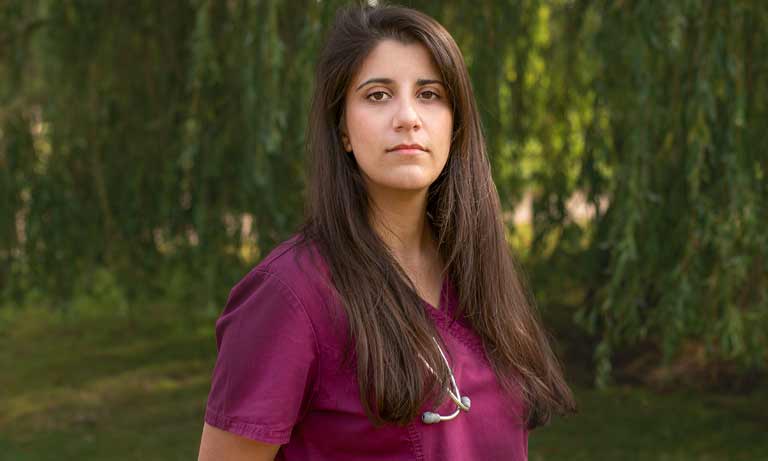Standing up for the veterinary profession
08 Aug 2024
13 Aug 2020 | Daniella Dos Santos
BVA President Daniella Dos Santos shares an update on what the new guidance on PPE from Public Health England (PHE) means for the vet profession.

Last week we received updated advice from Public Health England (PHE) about the role of PPE when it comes to vets and the test and trace system in England. Since then, we’ve received many questions about what this means for you in practice. By far the most common question has been ‘Does this guidance mean that the whole team needs to be wearing full PPE, all of the time?’
In short, no. Members of the veterinary team do not need to wear more PPE than they usually would. Full use of PPE is only appropriate in situations where you cannot maintain social distancing in your work, such as during dental work or surgery.
In fact, the PHE clarification explicitly recognises that ”in most circumstances […], it would be expected that veterinary workers identified as close contacts of (human) cases of Covid-19 will not have been wearing PPE and will therefore be advised to self-isolate.”
Let’s take a step back. Covid-19 is a public health emergency, and the profession has been incredible in adjusting ways of working to play our part in controlling the spread of the virus, including social distancing measures. However, we know social distancing is not always possible in practice, and this is why we sought clarification from PHE about how contact tracing would work for veterinary professionals.
We specifically wanted to know how the use of PPE in vet practices would impact on contact tracing. So, if a member of the team hadn’t been able to maintain social distancing with another team member who tested positive for the virus, but had been wearing PPE at the time, would this still count as a ‘contact’ and would they still be asked to self-isolate?
People who test positive for Covid-19 are asked to disclose to a contact tracer who they have had recent close contact with, so that these people can be contacted and asked to self-isolate. Close contacts are considered to be:
The advice provided to BVA and the RCVS via the CVO includes:
It’s clear we have not received an exemption from contact tracing, but PHE recognise how vets can use PPE in the case of being unable to socially distance within the workplace to mitigate the risk of interactions being considered as ‘contacts’. The level of PPE set out is consistent with that used in healthcare settings to assess individuals within 2m who are not currently a possible or confirmed case. We’ve had some questions around the safety of this, but it’s a scenario most comparable to the realities of working in veterinary practice (where we work closely with team members, not clients) and PHE has assessed it as being appropriate.
Each veterinary practice should carry out its own risk assessment in relation to use of PPE, the impact of test and trace, and ways of working. As I outlined above, PHE expects that most veterinary professionals would not be wearing full PPE and, in these cases, individuals would be asked to self-isolate.
If a notification to self-isolate would cause a significant impact on the provision of veterinary services, for example in rural/remote areas, and could impact animal health and welfare, vets can contact local PHE teams to carry out a risk assessment.
It is vital to recognise that the use of PPE does not and should not replace hygiene, biosecurity and social distancing measures. Practices should still be following government advice on how to make workplaces Covid Secure including:
You’ll need to think about how and where PPE is appropriate in your workplace, but for most situations PPE would not be needed: admin and reception staff should be able to work in a socially distant manner, for example by using screens; consults may be possible keeping physical distance; and vets working alone should use their normal PPE. Simply walking past colleagues within a workplace does not constitute close contact, just as it doesn’t in our personal lives.
Prudent use of PPE is appropriate use. It’s simply not appropriate for the whole team to be using full PPE at all times. Although the immediate urgency to reserve PPE for our human healthcare colleagues has eased, we should always be mindful of how we use resources. The veterinary profession has done a fantastic job of playing its part in protecting public health during the pandemic and we need to keep up the great work.
Take a look at our Coronavirus information hub for the latest advice for the vet profession and FAQs on Covid-19.
Get tailored news in your inbox and online, plus access to our journals, resources and support services, join the BVA.
Join Us Today